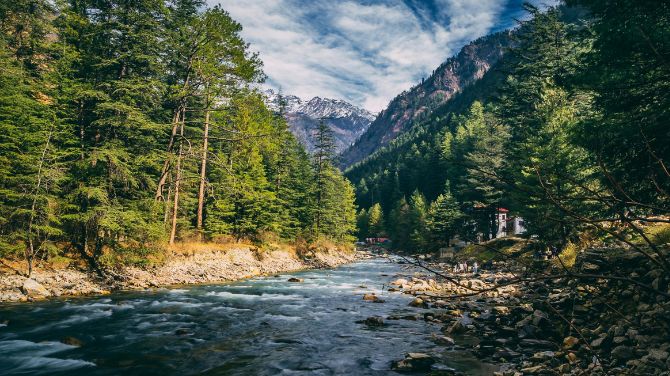With changing travel trends, more and more travellers are choosing trekking & hiking tourism over conventional sightseeing holidays. It offers you the chance to disconnect from urban chaos, immerse in pristine landscapes, and challenge your physical and mental limits. Whether you are a beginner or a seasoned trekker, trekking & hiking tourism has something to offer everyone, from short nature trails to high-altitude expeditions.
What Makes Trekking & Hiking Tourism So Popular?
Trekking & hiking tourism is not just about adventure; it is an experience that nurtures your soul and refreshes your mind. Some reasons for its growing popularity include:
- Connection with Nature: Witness mountains, rivers, meadows, forests, and wildlife in their natural habitat.
- Physical Fitness: Trekking strengthens your muscles, improves stamina, and keeps you healthy.
- Mental Detox: Walking amidst nature calms your mind, reduces stress, and brings inner peace.
- Cultural Immersion: Trekking trails often pass through remote villages, giving you insights into local life, food, and traditions.
- Adventure and Achievement: Reaching the summit or completing a trail gives unmatched satisfaction and confidence.
Top Trekking & Hiking Destinations in India
- Triund Trek, Himachal Pradesh
Perfect for beginners, Triund Trek near McLeodganj offers stunning views of the Dhauladhar range and Kangra Valley. The 9 km trek passes through pine forests and rhododendron trails, making it ideal for a weekend hiking getaway. - Roopkund Trek, Uttarakhand
Also known as the Skeleton Lake Trek, it is famous for its mysterious glacial lake with human skeletons dating back to the 9th century. The trek passes through dense oak forests, alpine meadows (Bugyals), and snowfields, offering breathtaking Himalayan views. - Hampta Pass Trek, Himachal Pradesh
This moderate trek connects Kullu Valley to Spiti Valley. Trekkers witness dramatic landscapes, from lush green valleys to barren cold deserts, along with camping by rivers and crossing streams. - Valley of Flowers Trek, Uttarakhand
A UNESCO World Heritage Site, this trek is known for its colourful alpine flowers blooming during monsoon. Combine it with Hemkund Sahib for a spiritual and natural experience. - Sandakphu Trek, West Bengal
Located on the Singalila Ridge, Sandakphu is the highest point in West Bengal, offering panoramic views of four of the world’s five highest peaks – Everest, Kanchenjunga, Lhotse, and Makalu. - Chadar Trek, Ladakh
One of India’s most thrilling treks, Chadar involves walking on the frozen Zanskar River during peak winter, experiencing temperatures as low as -30°C. It is a test of endurance and mental strength. - Kumara Parvatha Trek, Karnataka
South India’s toughest trek, it takes you through dense forests, meadows, and steep rocky climbs to reach the peak, rewarding you with panoramic views of the Western Ghats.
Types of Trekking & Hiking Tourism
- Day Treks: Short treks completed within a day, ideal for beginners and families.
- Weekend Treks: 1-2 night treks with camping, like Triund or Kheerganga.
- High Altitude Treks: Involving altitudes above 12,000 ft, requiring fitness and acclimatisation, like Roopkund and Hampta Pass.
- Expedition Treks: Long duration treks requiring technical knowledge, like Stok Kangri and Chadar Trek.
- Spiritual Treks: Combining trekking with pilgrimage, like Kedarnath, Hemkund Sahib, and Amarnath Yatra.
- Eco-Treks: Focused on learning about flora, fauna, and conservation along with trekking.
Best Season for Trekking & Hiking Tourism
- Summer (April to June): Ideal for treks in Himachal, Uttarakhand, Sikkim, and Ladakh as snow melts and trails become accessible.
- Monsoon (July to September): Best for treks like Valley of Flowers, though landslides can affect some regions.
- Autumn (October to November): Clear skies, crisp air, and beautiful landscapes for most Himalayan treks.
- Winter (December to February): Snow treks like Kedarkantha and Chadar Trek attract adventure enthusiasts.
Benefits of Trekking & Hiking Tourism
- Builds self-confidence and resilience
- Encourages teamwork and leadership skills
- Teaches survival and nature skills
- Promotes sustainable and eco-friendly tourism
- Supports local economies and homestays in remote villages
Tips for Planning Your Trekking & Hiking Holidays
- Choose treks as per your fitness level and acclimatisation ability.
- Book with registered operators who provide certified guides, safety gear, and emergency support.
- Carry essentials like trekking shoes, layered clothes, rain gear, first aid, reusable water bottles, and energy bars.
- Follow Leave No Trace principles – do not litter or damage flora and fauna.
- Respect local customs and always take permission before clicking photos of people or religious sites.
- Train yourself with cardio, walking, and stretching exercises at least a month before the trek.
- Stay hydrated and maintain a steady pace to avoid altitude sickness in high-altitude treks.
Conclusion
Whether you are trekking through lush Himalayan valleys, hiking to high-altitude lakes, or exploring dense Western Ghats forests, trekking & hiking tourism offers unmatched experiences that refresh your soul and challenge your spirit. So, pack your bags, put on your trekking shoes, and set out on trails that lead to unforgettable adventures, breathtaking views, and stories worth cherishing forever.















Leave a comment